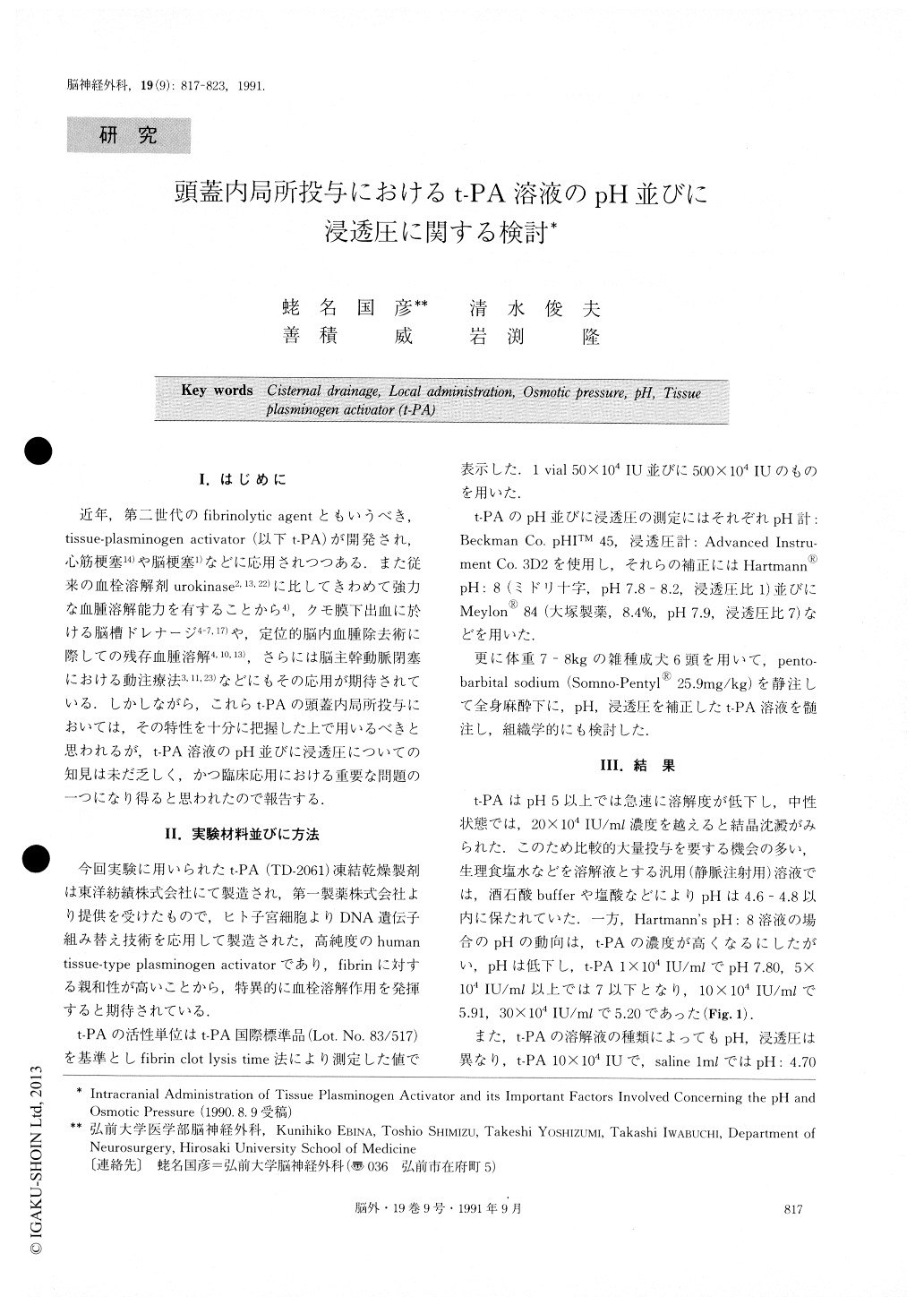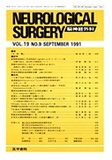Japanese
English
- 有料閲覧
- Abstract 文献概要
- 1ページ目 Look Inside
I.はじめに
近年.第二世代のfibrinolytic agentともいうべき,tissue-piasminogen activator(以下t-PA)が開発され,心筋梗塞14)や脳梗塞1)などに応用されつつある.また従来の血栓溶解剤urokinase2,13,22)に比してきわめて強力な血腫溶解能力を有することから4),クモ膜下出血に於ける脳槽ドレナージ4-7,17)や,定位的脳内血腫除去術に際しての残存血腫溶解4,10,13),さらには脳主幹動脈閉塞における動注療法3,11,23)などにもその応用が期待されている.しかしながら,これらt-PAの頭蓋内局所投与においては,その特性を十分に把握した上で用いるべきと思われるが,t-PA溶液のpH並びに浸透圧についての知見は未だ乏しく,かつ臨床応用における重要な問題の一つになり得ると思われたので報告する.
Abstract
Tissue plasminogen activator (t-PA) is expected to be used for cisternal drainage in subarachnoidal hemor-rhage, for dissolving of the residual hematoma after stereotactic evacuation of a cerebral hematoma, and for regional intraarterial injection therapy for occlusion of the primary cerebral artery. This is because the drug exerts a very potent and immediate dissolving-effect on a hematoma when it is locally administered.
However, the solubility of t-PA is rapidly decreased at pH 5 or more. At pH 7 or more, precipitation of crystals is observed when the concentration of t-PA ex-ceeds 20 × 104 IU/ml. The pH of the t-PA general-purpose solution (for intravenous injection) is adjusted at 9.6 to 4.8 because of its solubility and stability, and the osmotic pressure is also increased with an increase in concentration of t-PA. When the concentration of t-PA is 750 × 101 IU/ml, the Osmotic ratio is 30 and the pH is 4.82. These features suggest that a locally admi-nistered t-PA solution at high concentration may induce meningeal irritation leading to headache and vomiting, and exacerbation of symptomatic cerebral vasospasm when it is used for cisternal drainage. Furthermore, the t-PA solution administered intraarterially at high con-centration may induce adverse effects such as des-siocyte and echinocyte deformation of erythrocytes and the sludging phenomenon of leukocytes in the cerebral microcirculation, and a sensation of fever and pain upon injection.
Therefore, the dose and method of administration ofthe t-PA for local intracranial use should be determined by taking into consideration its pH and osmotic pressure.
The pH and osmotic pressure of t-PA saline solution (10 × 104 IU/ml) were corrected to 7.23 ± 0.072 and 1.45 to 1.48, respectively, with 6.0 μl of Meylon, andthose of t-PA Hartmann's pH : 8 solution were cor-rected to 7.28 ± 0.023 and 1.44 to 1.46, respectively, with 4.0μl of Meylon.
The important factors involved in local intracranial administration of this drug are discussed.

Copyright © 1991, Igaku-Shoin Ltd. All rights reserved.


